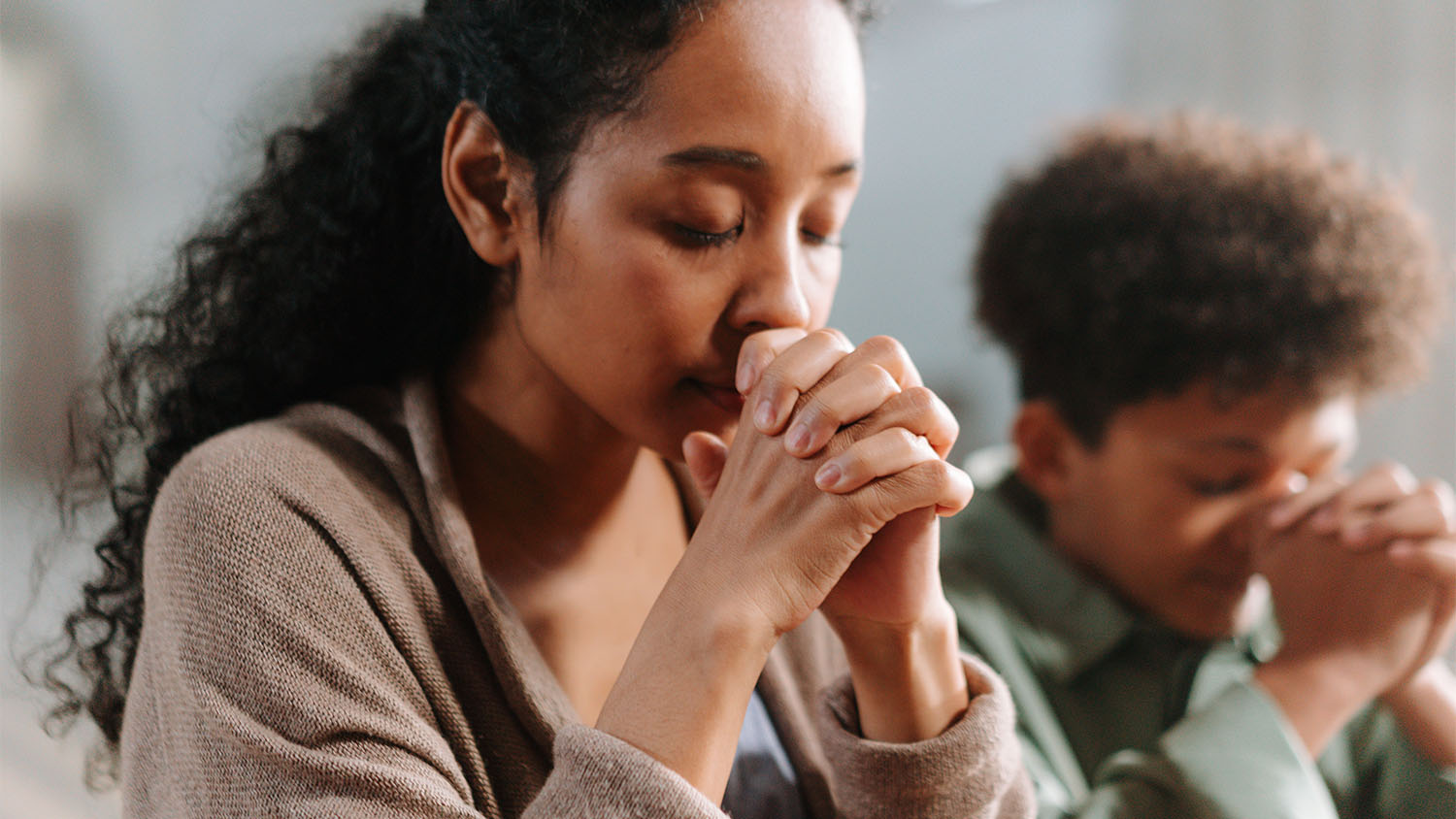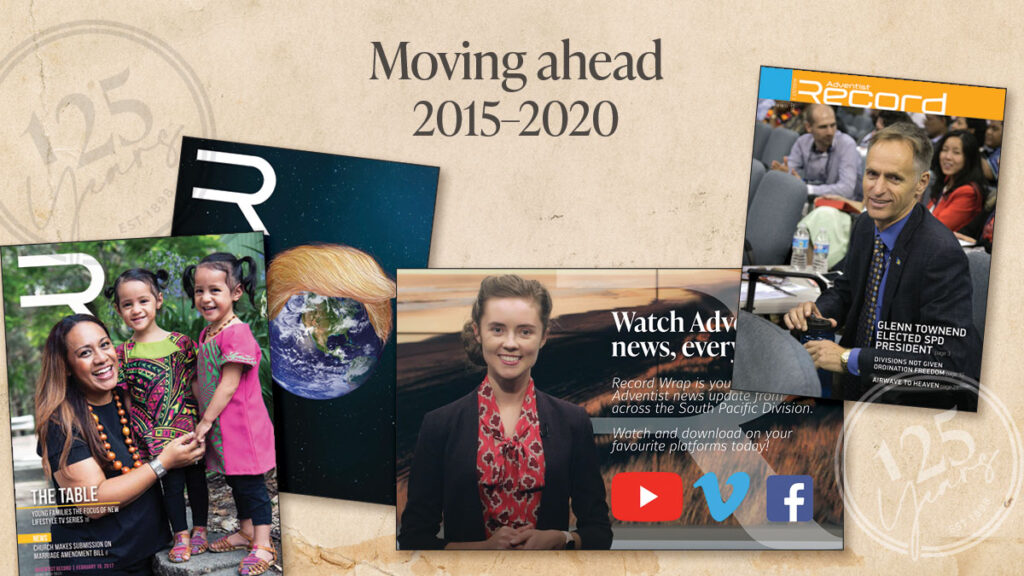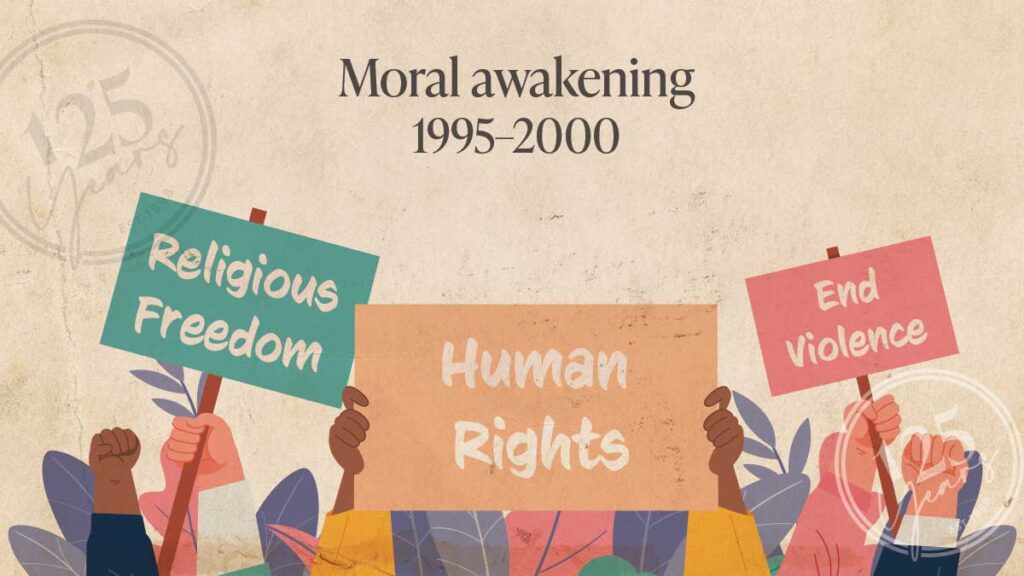God created man and woman in His image (Genesis 1:27) and gave both the task of caring for the created world (1:28). There is no evidence in the first chapter of Genesis that man was created with more of God’s image than woman, or that man was created for a different role than the woman. Despite this account of gender equality, some have suggested the designation of Eve as helper (2:18) introduces the concept of hierarchy. However, the Hebrew word ezer, translated “helper”, cannot imply gender inequality as it is used throughout the Old Testament to describe God as “helper” (for example, Psalm 54:4). So from the first two chapters of Genesis, it is evident that God’s ideal for humanity was that man and woman would be equal.
Unfortunately, the third chapter of Genesis tells us that sin changed this, and that gender hierarchy was one of the sad consequences of sin.1 While some have suggested that the power inequality (“he will rule over you” 3:16b) was prescribed by God, Adventist scholars of the Old Testament are overwhelmingly convinced that these words simply describe the natural consequences of sin. Accordingly, the gender inequality that sin introduced, and that God foretold, is reflected in much of the Old Testament. There are, however, notable exceptions to this narrative. Women such as Miriam, Deborah, Ruth and Esther—women whom God called to exercise both spiritual and civic leadership—give evidence to the reality that the subservient role of most Old Testament women was cultural rather than divinely ordained or due to their fundamental inferiority.2 Despite these exceptions, however, by the time of Jesus’ birth, the relationship between men and women was defined by the power inequality that sin introduced, resulting in women’s subservience, marginalisation and even abuse—a far cry from the Creator’s ideal.
Thus, while the way Jesus related to women may seem unremarkable to our 21st century eyes, in the context of first-century Jewish culture, Jesus’ approach to women was groundbreaking. In a society that marginalised women, Jesus engaged compassionately with them (Mark 5:24-34; John 8:1-20); included them in His circle of disciples (Luke 8:1-3; 10:38-42); and entrusted them with His messianic identity (John 4:1-26; 20:11-16). Even more counter-culturally, Jesus invited women to participate in the work of sharing the gospel (Luke 24:22-24; John 20:17,18).
Despite the patriarchal culture in which it came into existence, the New Testament church followed Jesus’ example of gender inclusivity. When the apostle Paul stated that “Christ himself gave the apostles, the prophets, the evangelists, the pastors and teachers, to equip his people for works of service, so that the body of Christ may be built up” (Ephesians 4:11,12), he did not suggest these gifts were given only to men. Accordingly, Paul partnered with women, who served as leaders and teachers, including Phoebe, “a deacon of the church in Cenchrae” (Romans 16:1); Lydia, whom scholars consider the leader of the church in Philippi (Acts 16:11-40); and Junia, a woman “outstanding among the apostles” (Romans 16:7). Paul also referred to Priscilla, Euodia and Synteche as co-workers (sunergos), a term he applied equally to the men and women with whom he partnered. New Testament scholar Philip Payne suggests that a careful reading of Paul’s letters reveals that he respected the women with whom he laboured for the Lord, and he saw them “not as his subordinates, but as his partners and equals”,3 thus reflecting the Creation ideal.
Historically, the Adventist Church has viewed the Creation story of Genesis 1 and 2 as foundational to our faith, and has called believers back to Creation ideals, including the seventh-day Sabbath and a plant-based diet. While early Adventists may not have overtly taught the gender equality described in the Creation account, they affirmed the need for both men and women to participate in ministry. Accordingly, the Archives of the General Conference of Seventh-day Adventists reveal many early Adventist women who were licensed ministers, evangelists, writers and administrators.4
Notable examples include Sarah Hallock Lindsey, who, responding to an urgent request by denominational leadership for wider participation in ministry, began preaching in 1867, and was licensed as a minister in 1872; Margaret Caro, an Australian dentist who was also a licensed minister and whose ministry and credentials were affirmed by Ellen White (Letter 33, 1893); Hetty Hurd Haskel, wife of Stephen Haskell, who gave up a teaching career after her conversion and began 34 years of ministerial work, including training of ministers in England, South Africa and Australia; Lulu Wightman, who raised up a total of 17 churches and of whom her conference president wrote: “She has accomplished more the last two years than any minister in this state”; and Ellen White, who carried the credentials of an ordained minister throughout her life and who stated, “It is the accompaniment of the Holy Spirit of God that prepares workers, both men and women, to become pastors of the flock of God”.5 Following the death of Ellen White (1915) and the impact of Christian fundamentalism, support for women ministers in Adventism decreased.
In recent decades, the Adventist Church has renewed its claim to the promise that, “in the last days, [God] will pour out [His] Spirit on all people, and [our] sons and daughters shall prophesy” (Acts 2:17; cf Joel 2:28). Today, the Church affirms the importance of both men and women ministering together, upholding the call of God in women’s lives, and highly valuing the contributions of women in ministry. Unfortunately, the 2015 General Conference (GC) vote, which disallowed the Church’s world divisions from independently making decisions regarding women’s ordination, confused many church members about the meaning of the vote and the role of women pastors going forward. In response, Pastor Ted Wilson, president of the General Conference of Seventh-day Adventists, affirmed the vote to mean that, in accordance with current GC policy and the Church Manual, women should continue functioning as commissioned pastors and ordained elders.6 GC ministerial secretary Pastor Jerry Page says, “In agreement with the votes of the GC regarding women’s ordination and women in ministry, the GC ministerial association in compliance with the Church Manual, GC Working Policy, and where local divisions vote to allow it, continues to support the:
1. Commissioning of women pastors, including their right to baptise new members
2. Ordination of women elders
3. Importance of both men and women participating in ministry together as a team where appropriate
Pastor Page also shared the following personal reflection: “One of the greatest strengths and joys of my ministry has been the opportunity the Lord has given me to serve over the years in team ministry with my wife Janet. As the Lord called and gifted her to lead in conferences as director of prayer ministries, women’s ministries, and pastoral families ministries, the Church recognised her calling and work by giving her commissioned minister credentials. For the past 12 years, she has been an associate ministerial secretary in the GC ministerial association, serving the world field, where we have ministered together with Jesus.”
In the SPD, the number of women in pastoral ministry has slowly grown over the past 20 years; however, women continue to represent less than 7 per cent of all pastors. While the reasons for this low ratio are likely to be many, one must surely be the ambivalent messages we have communicated regarding women pastors.
What can you and your church do to empower women for ministry? Here are some practical suggestions:
• Create opportunities for focused Bible study on Jesus’ dealings with women and the theology of women in leadership.
• If you preach or teach, tell stories about women, who make up more than half the SPD membership; and regularly remind your congregation that spiritual gifts are given equally to both men and women.
• Go out of your way to affirm the spiritual gifts of women of all ages in your congregation.
• Encourage well-suited women to consider pastoral ministry, Bible teaching or chaplaincy.
• Develop a radar for the subtle dynamics that marginalise women and go out of your way to mitigate them.
• Encourage the voices of women who don’t often speak—their thoughtful and creative contributions might surprise you!
• Ensure women are well-represented on your board.
• Consider asking your conference to add a woman to your pastoral team.
“In 35 years of ministry in the Seventh-day Adventist Church in the South Pacific I have seen the evidence of God’s call on many women in all kinds of ministry,” shares Pastor Glenn Townend, SPD president. “Some of my most effective and productive co-workers have been women serving as pastors and head elders in local churches. They had skills, abilities and perspectives neither I nor our male colleagues had. As God calls women to ministry and leadership who are we to stand in the way?”
Drs Edyta and Darius Jankeiwicz serve at the South Pacific Division as associate ministerial secretary (women in ministry) and field, ministerial secretary and Spirit of Prophecy coordinator.
1. See, for example, Richard Davidson, “Headship, Submission, and Equality in Scripture,” in Nancy Veymeister, Women in Ministry: Biblical and Historical Perspectives (Berrien Andrews University Press, 1998), 259-295. There are reports of midwives in the 15th and 16th centuries being burned at the stake for offering women pain relief during childbirth, because a prescriptive reading of Genesis 3, common during this time, implied that women must suffer in childbirth. The most recent known case of a woman losing her life in this way was Eufame Maclayne, who was burned at the stake in 1591 for asking for pain relief during the birth of her twins.
2. Rebecca Merrill Groothuis, Good News for Women: A Biblical Picture of Gender Equality (Grand Rapids, MI: Baker Books, 1996), 22.
3. Philip B Payne, Man and Woman, One in Christ: An Exegetical and Theological Study of Paul’s Letters (Grand Rapids, MI: Zondervan, 2009), 61.
4. Josephine Benton, Called by God: Stories of Seventh-day Adventist Women Ministers (Lincoln, NE: Advent Source, 2002).
5. Ellen White, Testimonies for the Church, Vol 6, 322.
6. <adventist.news/news/gc-president-says-ordination-vote-doesnt-change-current-policy>.






